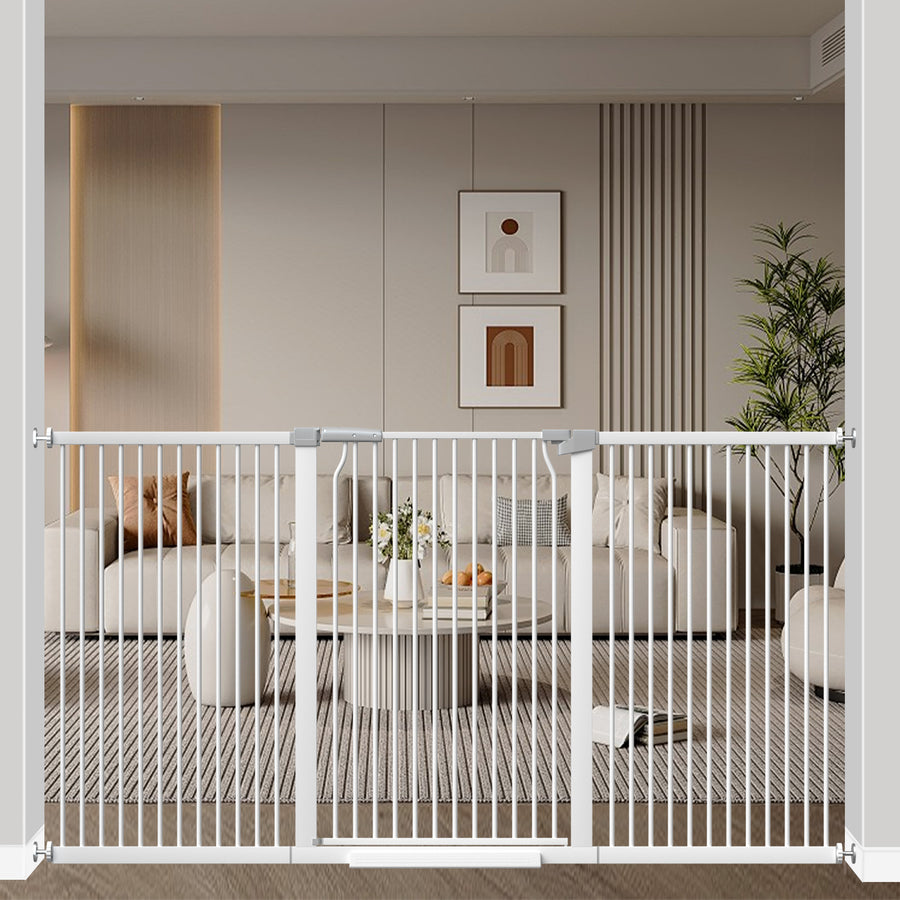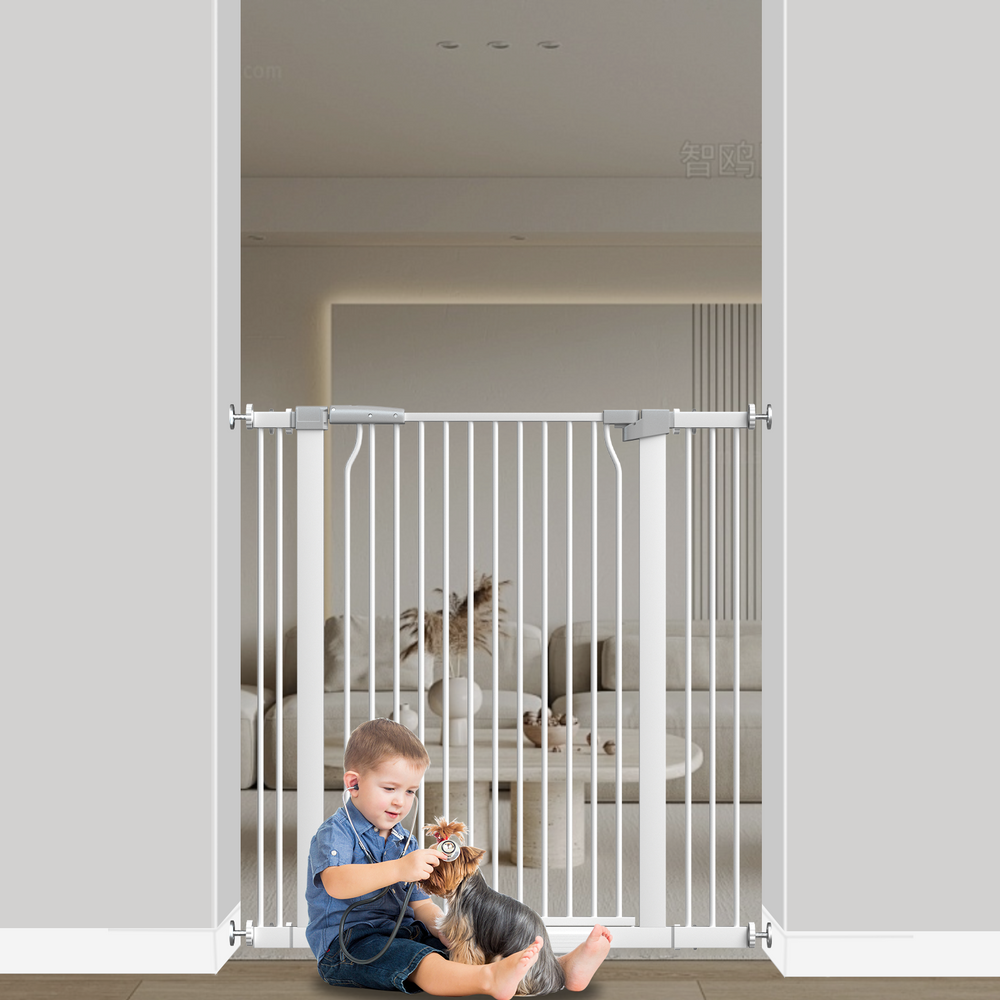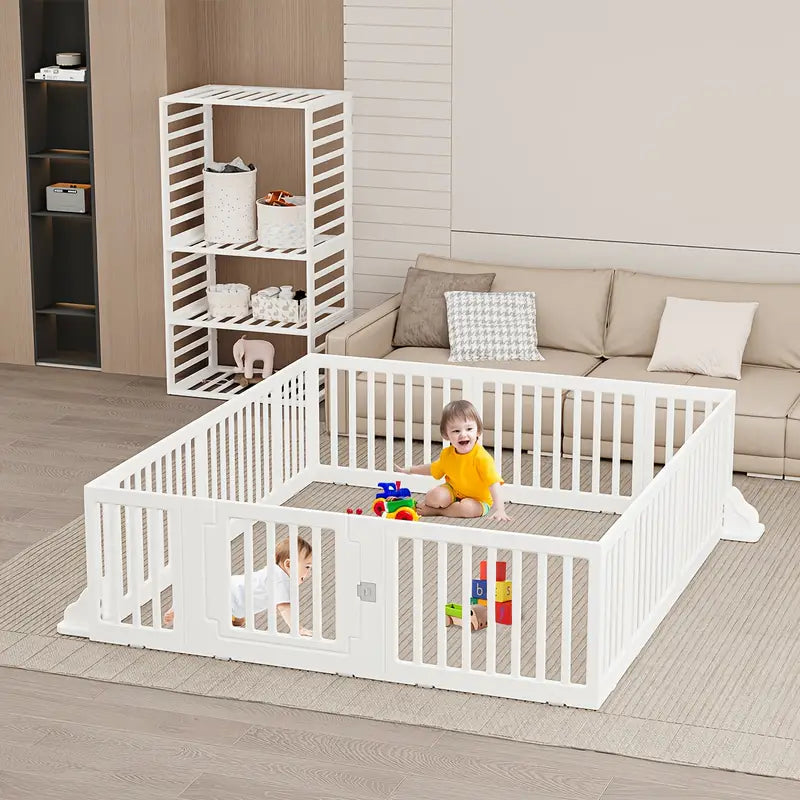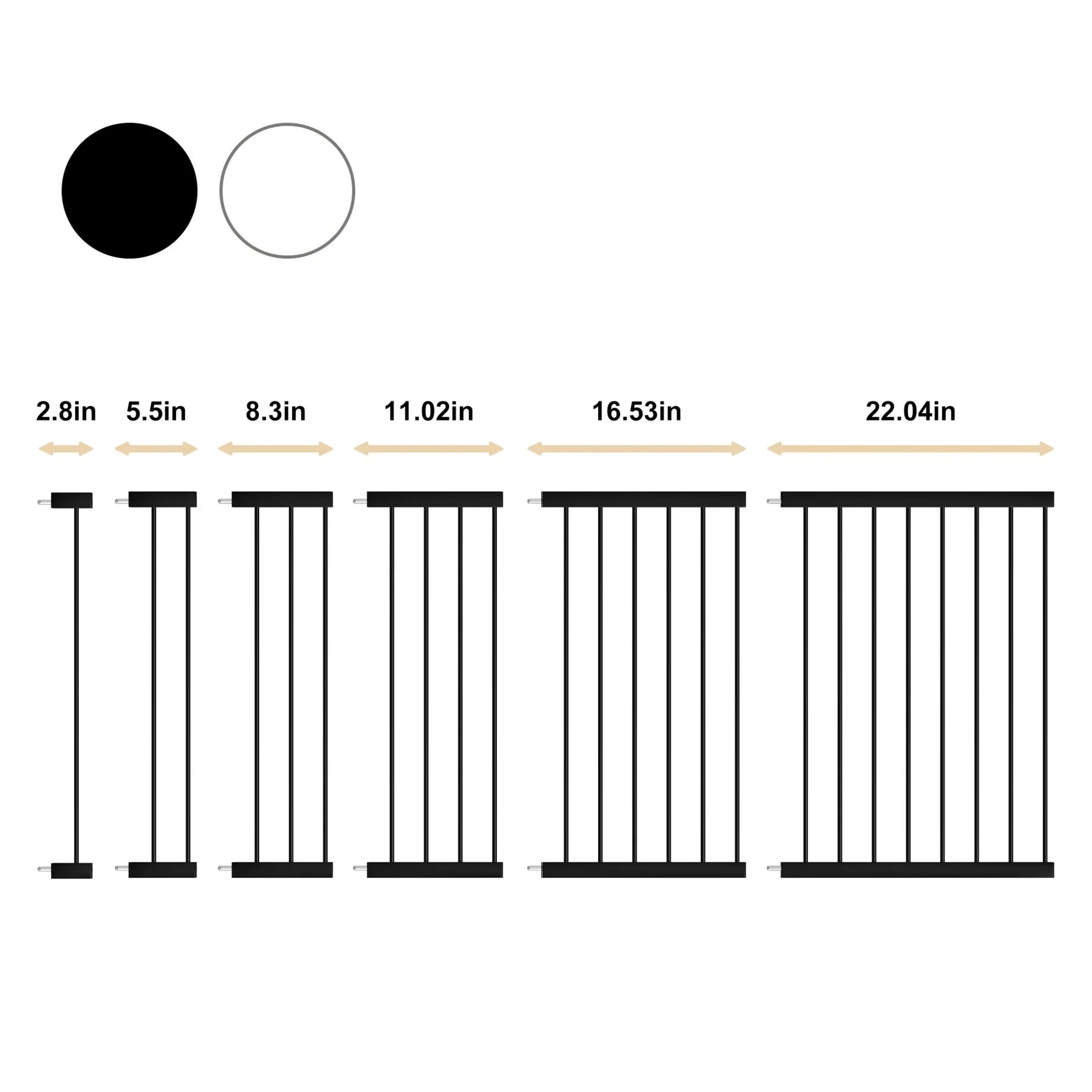Top 10 Baby Safety Essentials for New Parents: A Comprehensive Guide
1. Crib
Okay, so the crib. This is kind of a big deal. It's where your baby will (hopefully) spend a lot of time sleeping, so you want to get it right. I remember when we were setting up our nursery, it felt like there were a million different cribs to choose from. It was overwhelming, to say the least.
The crib is a safe space for your baby to sleep.
When you're picking out a crib, there are a few things to keep in mind. First, make sure it meets all current safety standards. You can usually find this information on the manufacturer's website or on the crib itself. Don't buy a used crib, especially an older one, because it might not meet those standards. Second, think about the size of the crib. You want something that will fit comfortably in your nursery, but also something that your baby won't outgrow too quickly. Third, consider the style of the crib. Do you want something simple and classic, or something more modern and stylish? It's really up to you and your personal taste.
We ended up going with a convertible crib, which can be turned into a toddler bed and then a full-size bed. It was a bit more expensive upfront, but we figured it would save us money in the long run. Plus, it meant we didn't have to worry about buying new beds every few years.
Here's a quick rundown of the crib necessities:
- Crib
- Crib mattress
- 2 fitted crib sheets
- Waterproof mattress protectors
And some nice-to-haves:
- Changing table
- Bassinet (safe until the baby is 3 to 6 months old)
- Rocking chair or glider
What you don't need: Pillows, loose bedding or blankets, sleep positioners, bumper pads, or mattress padding. All of these items increase the risk of Sudden Infant Death Syndrome (SIDS), and should be kept out of the crib. Also, don't get a secondhand crib. Get a new one for safety purposes instead. You might also want to consider a wearable sleep sack for your baby.
2. Baby Gates
Baby gates are super important, especially once your little one starts crawling and exploring. Seriously, they're a lifesaver. I remember when my kiddo started moving; it felt like overnight, she was everywhere! Baby gates became my best friend. They're not just for stairs, either; you can use them to block off rooms or areas you don't want your baby to access, like the kitchen or home office.
The main goal is to create a safe space where your baby can roam without getting into trouble.
Choosing the right gate can be a bit overwhelming, though. There are pressure-mounted gates, which are great for doorways and hallways because they're easy to install and don't require drilling. Then there are hardware-mounted gates, which are more secure and ideal for the top of stairs. I went with hardware-mounted ones for the stairs because I didn't want to risk anything.
Here are a few things to keep in mind when picking out baby gates:
- Measure the opening: Make sure the gate fits the space you need to block off. Some gates come with extensions for wider openings.
- Consider the height: You want a gate that's tall enough so your baby can't climb over it, but not so tall that it's a pain for you to step over.
- Think about the locking mechanism: Some gates have simple, one-handed latches, while others require two hands. Consider what's easiest for you to operate, especially when you're holding a baby.
I remember one time, I didn't latch the gate properly, and my daughter managed to push it open and start heading down the stairs. Luckily, I caught her in time, but it was a scary reminder to always double-check the latch. Now, I'm super diligent about making sure the gate is securely closed every single time.
It's also worth thinking about the material of the gate. Some are made of metal, while others are wood or plastic. Metal gates are usually sturdier, but wooden gates can look nicer and blend in better with your home decor. Plastic gates are lightweight and easy to clean, which is a plus. Ultimately, it comes down to personal preference and what works best for your space. Don't forget to check out safety purposes for more information.
3. Car Seat
Okay, so car seats. This is a big one, and honestly, it can be super confusing with all the different types and rules. But trust me, getting this right is so important. It's not just about following the law; it's about keeping your little one safe and sound. I remember when we were getting ready for our first, I spent hours researching and comparing different models. It felt like a whole new language! But once you get the hang of it, it's not so bad.
Choosing the Right Car Seat
Picking the correct car seat is the first step in ensuring your baby's safety while traveling. There are basically three main types: rear-facing (for infants), convertible (which can switch from rear- to forward-facing), and booster seats (for older kids). You'll want to consider your baby's age, weight, and height when making your choice. Infant-only seats are great for newborns, but they're quickly outgrown. Convertible seats are a good long-term investment because they adapt as your child grows. Always check the car seat's manual for specific guidelines and weight/height limits. It's also a good idea to read reviews and see what other parents are saying about different models. I found that super helpful when I was trying to decide!
Proper Installation and Use
Installing the car seat correctly is just as important as choosing the right one. I know, it sounds obvious, but you'd be surprised how many people mess this up. Make sure to follow both the car seat's manual and your vehicle's manual. The seat should be tightly secured and not move more than an inch in any direction. When you put your baby in the seat, adjust the harness straps so they fit snugly, with the chest clip at armpit level. Don't make them too tight, but also don't leave them too loose. It's a delicate balance. And never, ever use a car seat that's been in an accident. Even if it looks fine, it could be damaged internally.
Safe Driving Habits with a Baby
Driving with a baby in the car is a whole different ballgame. You're not just responsible for yourself anymore; you've got precious cargo in the back! Never leave your baby alone in the car, even for a minute. It's just not worth the risk. Avoid distractions while driving, like texting or fiddling with the radio. If your baby needs attention, pull over to a safe spot before tending to them. And keep loose objects out of the car, as they can become projectiles in an accident. I always kept a small mirror in the car so I could see my baby in the rearview mirror. It gave me peace of mind knowing I could check on them without turning around. Also, consider getting infant car seat for newborns.
It's also a good idea to take a car seat safety class. Many hospitals and community centers offer these classes, and they can be a great way to learn about proper installation and use. Plus, you'll have the chance to ask questions and get hands-on practice. Trust me, it's worth the time and effort.
Here's a quick reminder of key points:
- Always read the manuals.
- Ensure a snug fit for the harness.
- Never leave your baby unattended in the car.
And remember, child car seat safety is an ongoing process. As your child grows, you'll need to adjust the car seat and eventually transition to a booster seat. Stay informed and keep your little one safe!
4. Outlet Covers

Okay, so you've got this tiny human who's suddenly mobile. Everything is a game, including those tempting little holes in the wall. That's where outlet covers come in. They're not exactly exciting, but they are super important. Outlet covers prevent your baby from sticking their fingers or objects into electrical outlets.
There are a few different types, and honestly, it can be a bit overwhelming trying to figure out which ones are best. Some are simple plastic caps that you push in, others are sliding covers, and some even replace the entire outlet plate. I went with a mix of the sliding covers and the full replacement ones. The caps seemed too easy for my little one to pull out, and I didn't want to take any chances.
Here's a quick rundown:
- Simple Caps: Cheap and easy to install, but can be removed by determined toddlers.
- Sliding Covers: Offer better protection, as they require a bit more dexterity to open.
- Full Outlet Replacements: These replace the entire outlet plate with a cover that slides shut when not in use. They're the most secure option, but also the most expensive and require a bit more installation effort.
I remember when my cousin's kid managed to pull out a simple cap and was about to stick a paperclip in the outlet. It was a close call, and it made me realize that you really can't be too careful when it comes to electricity and babies. Seriously, don't skimp on this one. It's worth the peace of mind.
Consider the layout of your home and the types of outlets you have. Some outlets are in awkward places, and certain covers might not fit well. Also, think about how easy it will be for you to use the outlets. You don't want to be struggling to plug in your phone charger every night! I found some great babyproofing gear online that had a variety pack, so I could try out different styles and see what worked best for us. It's all about finding the right balance between safety and convenience. Don't forget to baby-proof your home before your baby becomes mobile!
5. Cabinet Latches

Okay, so your little one is starting to explore. Cabinets are like treasure chests to them, full of shiny things and interesting textures (and sometimes, not-so-safe cleaning supplies!). That's where cabinet latches come in. They're a simple but effective way to keep your baby out of places they shouldn't be. I remember when my kid discovered the cabinet under the sink – it was filled with cleaning sprays. Talk about a heart-stopping moment!
Cabinet latches are a must-have for any parent wanting to keep their child safe from harmful substances or dangerous objects.
There are a few different types, and honestly, it can be a bit overwhelming trying to figure out which ones are best. Some stick on, some screw in, and some are magnetic. It really depends on your cabinets and what you're comfortable with installing. I personally prefer the magnetic ones because they're hidden, but the adhesive ones are great if you don't want to drill any holes. Just make sure whatever you choose is strong enough to withstand a determined toddler!
It's not just about chemicals, either. Think about sharp knives, heavy pots, or even just things that could be a choking hazard. Babies are quick, and they'll grab anything they can get their hands on. Taking the time to install these latches is a small investment that can save you a lot of worry (and potentially a trip to the emergency room).
Here's a quick rundown of the common types:
- Magnetic Latches: Hidden, require a magnetic key to open.
- Adhesive Latches: Easy to install, stick onto the cabinet and frame.
- Spring-Loaded Latches: Screw into the cabinet frame, automatically latch when closed.
- Sliding Latches: Good for double doors, slide to lock the handles together.
Don't wait until your baby is already pulling themselves up to install these. Get them in place early, so you don't even have to think about it. Trust me, peace of mind is priceless when you have a curious little one on the move. Also, remember to check them regularly to make sure they're still working properly. Little hands can be surprisingly strong, and sometimes they can figure out how to defeat even the best child safety measures.
6. Drawer Latches
Okay, so you've got the outlet covers and cabinet latches sorted, right? Don't forget about those drawers! Babies are curious little creatures, and drawers are just begging to be explored. Drawer latches are a simple but effective way to prevent your little one from pulling out drawers and potentially hurting themselves. I remember when my kiddo discovered the joys of emptying the junk drawer... not fun.
Here's why drawer latches are a must:
- Keeps little fingers safe from getting pinched.
- Prevents drawers from being pulled out and toppling over (especially important for dressers!).
- Stops your baby from accessing potentially dangerous items stored in drawers.
Think about it: cleaning supplies, small objects, even just the weight of a drawer can be a hazard. Drawer latches give you peace of mind knowing that your baby is safe from these dangers.
There are a few different types of drawer latches out there. Some install on the inside of the drawer, making them invisible from the outside, while others attach to the outside. I personally prefer the invisible drawer latches because they're less of an eyesore, but it really comes down to personal preference and what works best with your furniture. Make sure you enable cookies to ensure proper website functionality when you're shopping for these online!
7. Furniture Anchors
Okay, so, furniture anchors. This is one of those things that you might not think about until it's almost too late. I mean, how often do you really consider that a bookshelf could tip over? But trust me, kids are like little climbing ninjas, and they will find a way to get into everything.
Furniture anchors are designed to secure heavy or unstable furniture to the wall, preventing it from tipping over and potentially injuring a child. It's a simple fix that can make a huge difference. We had a close call with a dresser once, and after that, I went straight to the store and bought a bunch of these things. Best decision ever.
Here's a quick rundown of why they're so important:
- Prevent tip-over accidents.
- Easy to install (most of them, anyway).
- Relatively inexpensive.
- Can be used on a variety of furniture.
I remember reading a statistic about how many kids are injured each year from furniture tip-overs, and it was shocking. It's one of those silent dangers that you don't really think about until you're faced with it. So, take the time to secure your furniture. It's worth it for the peace of mind alone.
There are different types of furniture anchors out there. Some use straps, others use brackets. I personally prefer the ones with straps because they seem a bit more flexible and easier to adjust. But honestly, anything is better than nothing. Just make sure you're screwing them into a stud in the wall for maximum stability. You can baby-proof your home with these.
And don't forget to check them periodically! Over time, screws can loosen, and you want to make sure everything is still secure. It's a quick check that can save you a lot of heartache. Seriously, don't skip this one. It's a small investment of time and money that can protect your little one from a serious injury. You can also master car seat safety for extra protection.
8. Safety Locks
Okay, so your little one is starting to move around? Time to think about safety locks. Seriously, these things are lifesavers. I remember when my kiddo figured out how to open the cabinet under the sink – not a fun day. Safety locks are a must to keep them out of places they shouldn't be.
Here's a quick rundown:
- Cabinets: These are the big ones. Cleaning supplies, medications, anything potentially harmful needs to be locked up tight. I prefer the magnetic locks; they're invisible and easy for adults to use, but impossible for kids to figure out.
- Drawers: Don't forget about drawers! Especially in the kitchen and bathroom. Utensils, knives, anything sharp or dangerous should be secured.
- Toilet Locks: Yep, these are a thing. Keeps your little explorer from playing in the toilet (trust me, you don't want that). Plus, it prevents them from accidentally falling in.
I remember one time, my friend's toddler got into the cleaning supplies under the sink. Luckily, she caught him before he ingested anything, but it was a close call. That's when I realized how important these locks really are. It's not about being paranoid; it's about being prepared.
It's also a good idea to baby-proof your home before your baby becomes mobile. You can also ensure your baby's car safety for infants by choosing the right car seat.
9. Baby Monitor
Okay, so a baby monitor. Do you really need one? Well, if you live in a small apartment, maybe not. But for most houses, especially two-story ones, a baby monitor is a lifesaver. It lets you keep an eye (and ear) on your little one without constantly hovering.
A good baby monitor offers peace of mind, allowing you to handle household tasks or relax while ensuring your baby is safe and sound.
There are a ton of options out there, from basic audio monitors to fancy video monitors with all the bells and whistles. Some even track room temperature and humidity! It really depends on your needs and budget.
I remember when we first brought our daughter home, I was so anxious. I felt like I needed to be in the same room as her 24/7. The baby monitor really helped me relax a bit. I could actually take a shower without panicking! It's not just about watching them sleep; it's about having that extra layer of security.
Here's a quick rundown of the types of monitors you might encounter:
- Audio Monitors: Simple and affordable, these transmit sound only.
- Video Monitors: Allow you to see your baby, often with features like night vision and zoom.
- Smart Monitors: Connect to your smartphone or tablet, offering remote viewing and advanced features like movement detection. Consider a smart monitor for added convenience.
And here are some things to consider when buying a baby monitor:
- Range: Make sure it covers the distance between the baby's room and where you'll be.
- Battery Life: Especially important for portable monitors.
- Security: Look for encrypted signals to prevent hacking. It's a scary thought, but it happens! Prioritize security features for your baby's safety.
10. Swaddle Sack
Swaddle sacks are like wearable blankets, and honestly, they're a lifesaver. I remember being so nervous about swaddling my first baby correctly with a regular blanket. The swaddle sack takes all the guesswork out of it. It keeps your baby snug and secure, which can help them sleep better and longer.
Here's why I think they're great:
- They're super easy to use. No complicated folding techniques required.
- They help prevent the startle reflex from waking the baby up.
- They keep the baby's arms from flailing around, which can also disrupt sleep.
I was skeptical at first, thinking it was just another baby gadget. But after a few nights of using a swaddle sack, I was a convert. My baby slept so much better, and that meant I slept better too. It's a win-win!
It's important to choose the right size and type of swaddle sack for your baby. Some have zippers, some have Velcro, and some allow the baby's arms to be out. Experiment a little to see what works best for your little one. And always make sure the swaddle isn't too tight, so baby can move their hips freely. If you are having trouble with your security measures, contact the site owner for assistance. Also, make sure to enable cookies. If you are still having issues, provide the Cloudflare Ray ID to the site owner.
Wrapping It Up
So there you have it—our top ten baby safety essentials for new parents. It might feel like a lot to take in, but trust me, these items are worth it. They help keep your little one safe and give you peace of mind. Remember, every baby is different, so adjust this list to fit your family’s needs. Stay alert, keep learning, and don’t hesitate to reach out for help when you need it. Parenting is a journey, and you’re not alone on this ride!






Leave a comment